Using VMD: an introductory tutorial
- PMID: 19085979
- PMCID: PMC2972669
- DOI: 10.1002/0471250953.bi0507s24
Using VMD: an introductory tutorial
Abstract
VMD (Visual Molecular Dynamics) is a molecular visualization and analysis program designed for biological systems such as proteins, nucleic acids, lipid bilayer assemblies, etc. This unit will serve as an introductory VMD tutorial. We will present several step-by-step examples of some of VMD's most popular features, including visualizing molecules in three dimensions with different drawing and coloring methods, rendering publication-quality figures, animating and analyzing the trajectory of a molecular dynamics simulation, scripting in the text-based Tcl/Tk interface, and analyzing both sequence and structure data for proteins.
Copyright 2008 by John Wiley & Sons, Inc.
Figures






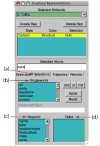
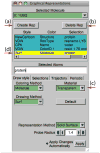
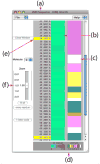




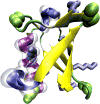

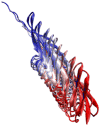



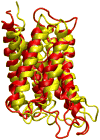




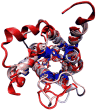





Similar articles
-
VMD: visual molecular dynamics.J Mol Graph. 1996 Feb;14(1):33-8, 27-8. doi: 10.1016/0263-7855(96)00018-5. J Mol Graph. 1996. PMID: 8744570
-
MultiSeq: unifying sequence and structure data for evolutionary analysis.BMC Bioinformatics. 2006 Aug 16;7:382. doi: 10.1186/1471-2105-7-382. BMC Bioinformatics. 2006. PMID: 16914055 Free PMC article.
-
Multiple Alignment of protein structures and sequences for VMD.Bioinformatics. 2006 Feb 15;22(4):504-6. doi: 10.1093/bioinformatics/bti825. Epub 2005 Dec 8. Bioinformatics. 2006. PMID: 16339280
-
State-of-the-art bioinformatics protein structure prediction tools (Review).Int J Mol Med. 2011 Sep;28(3):295-310. doi: 10.3892/ijmm.2011.705. Epub 2011 May 23. Int J Mol Med. 2011. PMID: 21617841 Review.
-
Computational tools for protein modeling.Curr Protein Pept Sci. 2000 Jul;1(1):1-21. doi: 10.2174/1389203003381469. Curr Protein Pept Sci. 2000. PMID: 12369918 Review.
Cited by
-
Molecular dynamics identifies semi-rigid domains in the PD-1 checkpoint receptor bound to its natural ligand PD-L1.Front Bioeng Biotechnol. 2022 Oct 6;10:838129. doi: 10.3389/fbioe.2022.838129. eCollection 2022. Front Bioeng Biotechnol. 2022. PMID: 36277392 Free PMC article.
-
Diameter Dependent Melting and Softening of dsDNA Under Cylindrical Confinement.Front Chem. 2022 May 2;10:879746. doi: 10.3389/fchem.2022.879746. eCollection 2022. Front Chem. 2022. PMID: 35586267 Free PMC article.
-
Computational approaches to 3D modeling of RNA.J Phys Condens Matter. 2010 Jul 21;22(28):283101. doi: 10.1088/0953-8984/22/28/283101. Epub 2010 Jun 15. J Phys Condens Matter. 2010. PMID: 21399271 Free PMC article. Review.
-
Exploring the Interaction Mechanism Between Cyclopeptide DC3 and Androgen Receptor Using Molecular Dynamics Simulations and Free Energy Calculations.Front Chem. 2018 Apr 19;6:119. doi: 10.3389/fchem.2018.00119. eCollection 2018. Front Chem. 2018. PMID: 29755968 Free PMC article.
-
Actinous enigma or enigmatic actin: Folding, structure, and functions of the most abundant eukaryotic protein.Intrinsically Disord Proteins. 2014 Aug 15;2(1):e34500. doi: 10.4161/idp.34500. eCollection 2014. Intrinsically Disord Proteins. 2014. PMID: 28232879 Free PMC article. Review.
References
-
- Eastwood MP, Hardin C, Luthey-Schulten Z, Wolynes PG. Evaluating the protein structure-prediction schemes using energy landscape theory. IBM J Res Dev. 2001;45:475–497.
-
- Freddolino PL, Arkhipov AS, Larson SB, McPherson A, Schulten K. Molecular dynamics simulations of the complete satellite tobacco mosaic virus. Structure. 2006;14:437–449. - PubMed
-
- Frishman D, Argos P. Knowledge-based secondary structure assignment. Proteins. 1995;23:566–579. - PubMed
-
- Humphrey W, Dalke A, Schulten K. VMD – Visual Molecular Dynamics. J Mol Graphics. 1996;14:33–38. - PubMed
-
- Isralewitz B, Gao M, Schulten K. Steered molecular dynamics and mechanical functions of proteins. Curr Opin Struct Biol. 2001;11:224–230. - PubMed
Publication types
MeSH terms
Substances
Grants and funding
LinkOut - more resources
Full Text Sources

